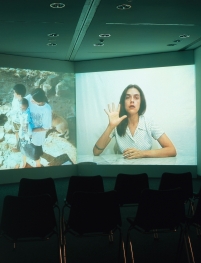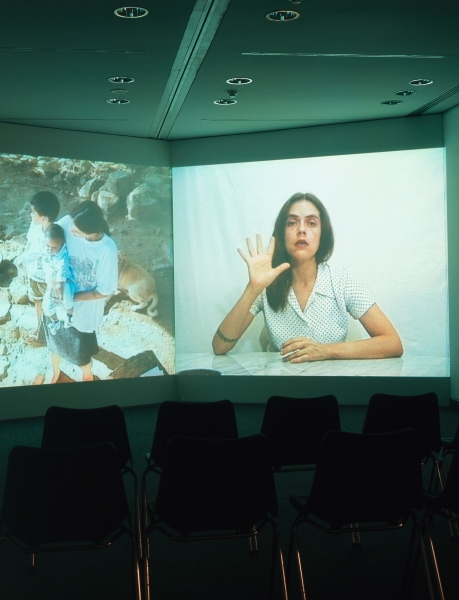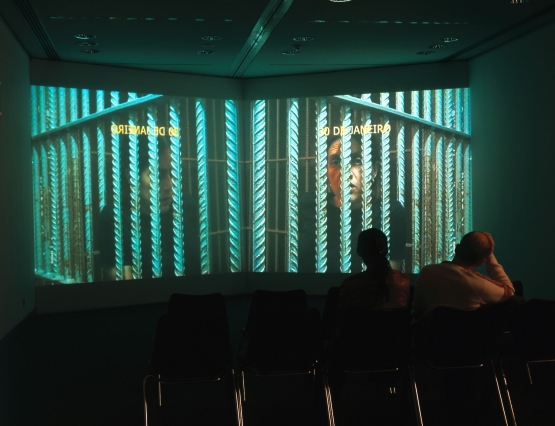Daily Mirror is a work entirely elaborated using video, a medium not much resorted to in Rosângela Rennó's production. Since 1997/1998, the artist has been conducting research with appropriated photography, based on its use in the most varied historical and social contexts. The emphasis placed on the series of photographs, negatives or archives thus falls on the organisational and presentational devices of the image
itself and on the functions which determine it, and which basically confine its identity. In a way, it is the determining of a field with presuppositions established in the social organisation and, as a consequence, promoter of the uses of the image, which subtracts from it its illusory visual specificity so sought after by Modernism. The photograph, commonly considered as a transparency given a priori of that visuality (a purely denotative statute, if we wish to apply the structuralist term), has, paradoxically, revealed itself as a preferential place of refutation of that same symbolic opacity that determines the values and the code of the image itself. In a way it was that which Roland Barthes had already stated in his essay "The Photographic Message":
"The photographic paradox will then be the coexistence of two messages, one without a code (the analogical aspect of the photograph), and the other codified (which would be the "art", or the treatment,
or the "writing", or the rhetoric of the photograph); structurally the paradox is evidently not the collusion of a denotative message with
a connotative one (that is probably the fatal statute of all mass communications), but the fact that the connotative (or codified) message evolves, in this case, from a message without a code. The structural
paradox coincides with an ethical one: when intending to be "neutral, objective" (...) how can photography be naturally and culturally
"objective" and "endowed"? It is by understanding the way by which the denotative and the connotative messages overlap, that perhaps, one day, it might be possible to answer this question.”
Many artists, mainly from the 1970s onwards, did in fact begin questioning the statute of the photographic image as a privileged trace for developing a critical work on that pressure field which organises the code, and confers it an apparently undeclared ideological value. A task of deconstructing these procedures was put into practice through multiple issues which enabled the isolation of the significant units or the represented values, so as to reveal how that imbrication is processed and which mechanisms of the symbolic order act.
Rosângela Rennó's work is inscribed in this practice in an absolutely unique way, taking her to new considerations never before approached and of vast range in the determinations of the image itself.
Pedro Lapa
Director of the Chiado Museum













